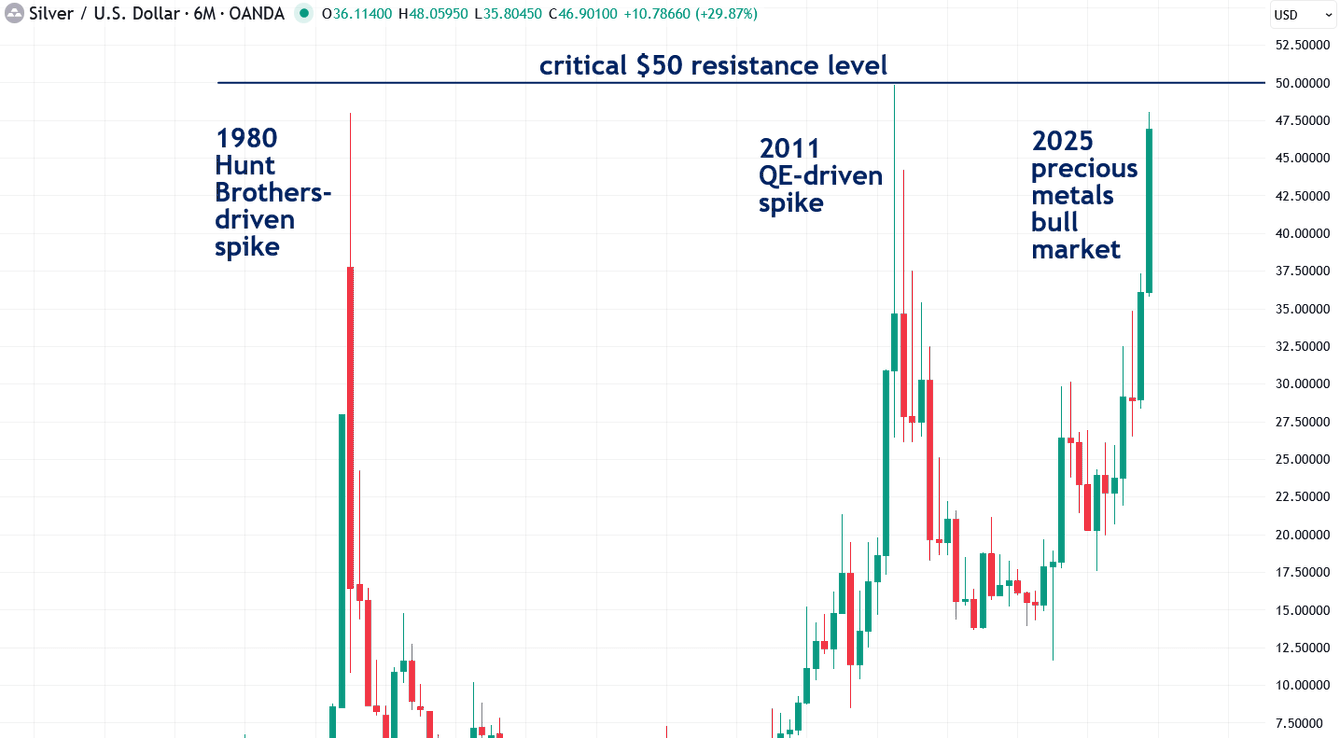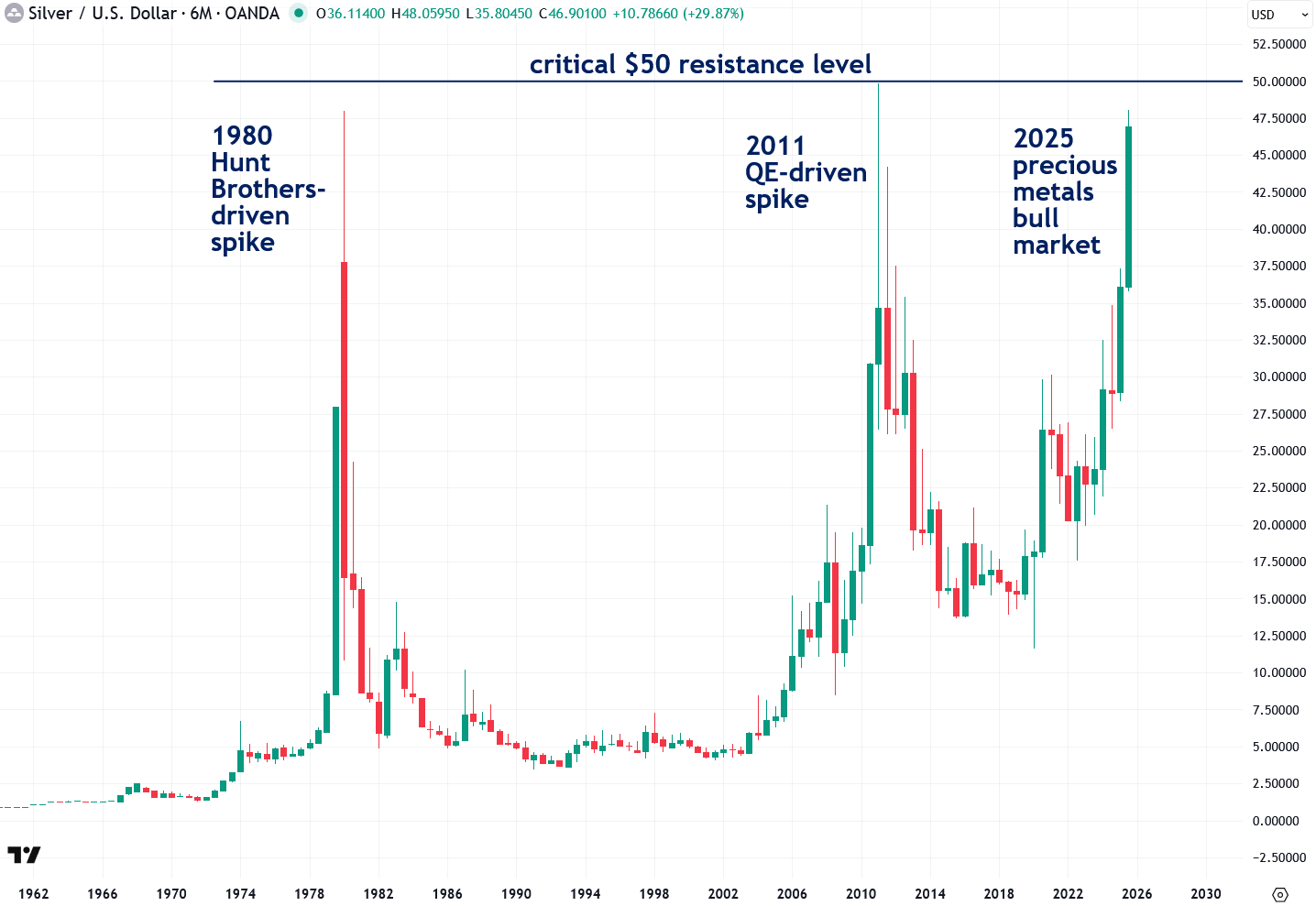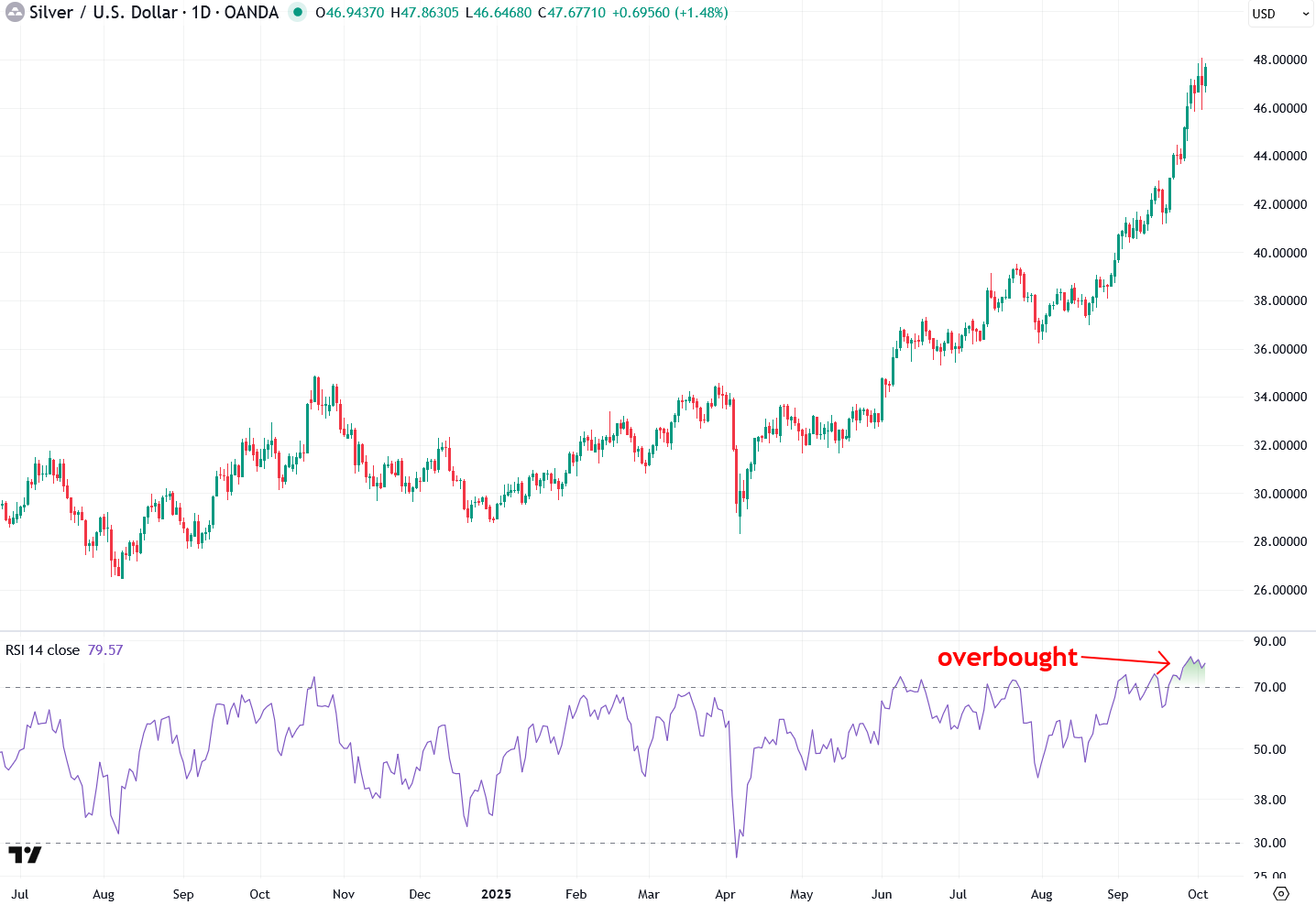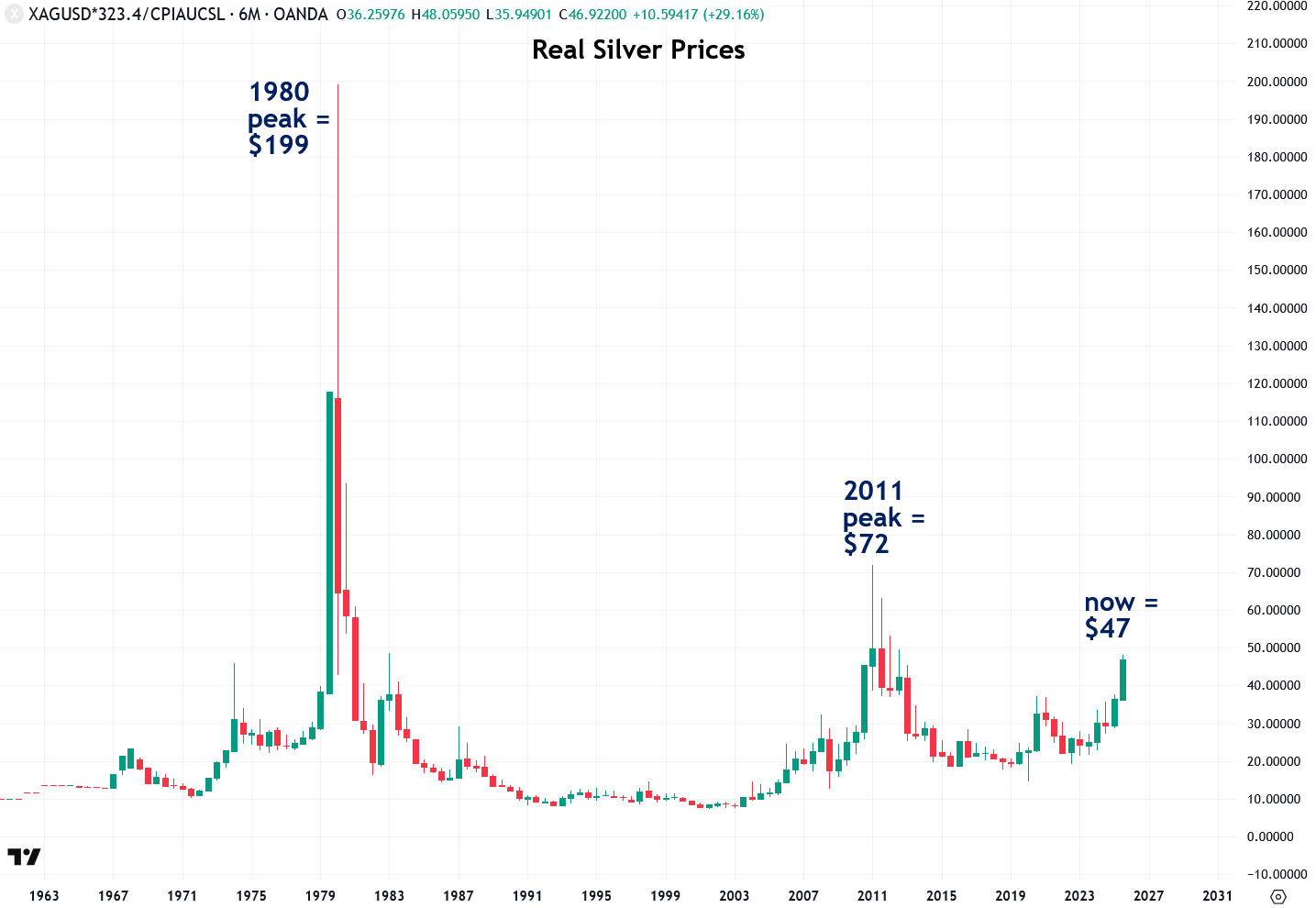With silver rallying strongly and rising more than 50% since the start of the year, a growing number of investors are starting to worry that a crash may be coming, similar to what happened after the major spikes in 1980 and 2011, instead of focusing on the incredible long-term opportunity that remains in front of us.
But as one of the few analysts who correctly identified the bull market in both silver and gold from the very beginning, I have consistently urged investors to stop dwelling on negative scenarios and instead recognize the tremendous upside that still lies ahead. This is silver’s moment to shine, and it is also a moment of vindication for those of us who believed in it all along, even when it was ignored by the mainstream financial world and left for dead as recently as just a few months ago.
In this report, I’ll explain why I believe silver will not repeat the sharp collapses that followed its short-lived surges in 1980 and 2011. This time is different. This is a legitimate, sustainable bull market with real staying power and the potential for lasting gains.
To start, I want to show you the long-term chart of silver going back six decades to the 1960s. You’ll notice that there have been three major price surges. The first was the Hunt Brothers–driven spike in 1980, followed by the quantitative easing–fueled rally in 2011, and now the current precious metals bull market. I believe this current move is a legitimate and sustainable bull market that is here to stay, as I will explain throughout this piece.
Now I want you to notice that in both 1980 and 2011, silver surged toward the $50 an ounce level, but that is where those rallies failed and quickly reversed. As a result, the $50 level became a critical price ceiling and resistance level and it still is to this very day.
For the past two years, as I have been calling for a silver bull market, even when silver was still in the $20 range, I consistently pointed to the $50 level as the key one to watch. I believed it would act like a magnet and draw the price of silver toward it, since major psychological levels often have that effect. And sure enough, silver has steadily climbed toward that level, just as I expected.
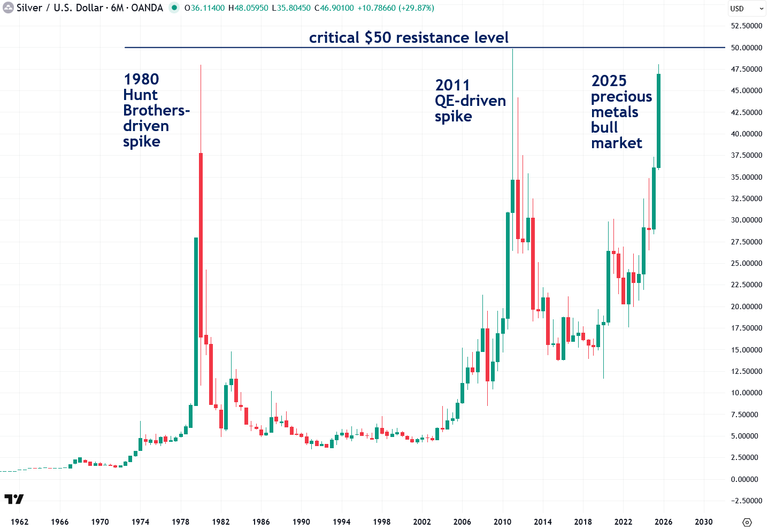
Now, with silver trading around $47 to $48 at the time of writing, it is extremely close to breaking through the key $50 level, which is a major make or break point. I also want to point out that many investors bought significant amounts of both silver bullion and ETFs during the frenzy of 2011. Unfortunately, when the price plunged afterward, they were left holding the bag, and many have been sitting on losses for the past 14 years.
But once silver finally surpasses $50, which will mark a new all-time high, no silver investor will be sitting on a loss, at least in nominal terms. That fact alone makes the $50 level a critical psychological barrier that will trigger a surge in investor sentiment once silver breaks above it.
Until recently, many silver investors remained deeply discouraged by years of losses and underperformance. But a decisive break above $50 will mark the beginning of an entirely new era for silver and will set off a powerful virtuous cycle. Many more investors will pile in, including new and younger participants who never considered silver before and who are not burdened by the baggage carried by older, battle-scarred veterans. This explosion of interest will help drive silver to incredible new heights.
Now I want to say that I adamantly believe silver is going to surpass $50 and go much higher from there in the near future. However, there is something I want to point out. Because silver has surged so strongly and so quickly, it is a bit extended in the short term, which makes it likely that it will consolidate or pause before eventually breaking through $50. Evidence of this can be seen in the Relative Strength Index (RSI) momentum indicator, shown in the chart below, which provides overbought or oversold readings for assets. I respect what it indicates.
That being said, unlike many amateur investors and analysts, I am adamant that an overbought reading like the current one in silver is not an automatic signal to sell or an indication that the bull market is over. I recommend reading my tutorial on this topic to learn more. There is a very high likelihood that silver will experience a shallow pullback or move sideways for a time to work off its overbought condition. This would conserve energy for the next leg higher, when silver smashes through the $50 ceiling.
Also, refer to my piece from April, when I called on the very day that gold was likely to consolidate temporarily, but not crash. Sure enough, that is exactly what played out in the following months, setting gold up for the impressive rally it is experiencing today. I believe a similar scenario is likely to play out in silver. And honestly, I welcome that because I would rather see silver rise in an orderly, more sustainable way than risk burning itself out. Plus, I would like to accumulate more of everything, including silver bullion, mining stocks, and more! And I’m sure you do too.
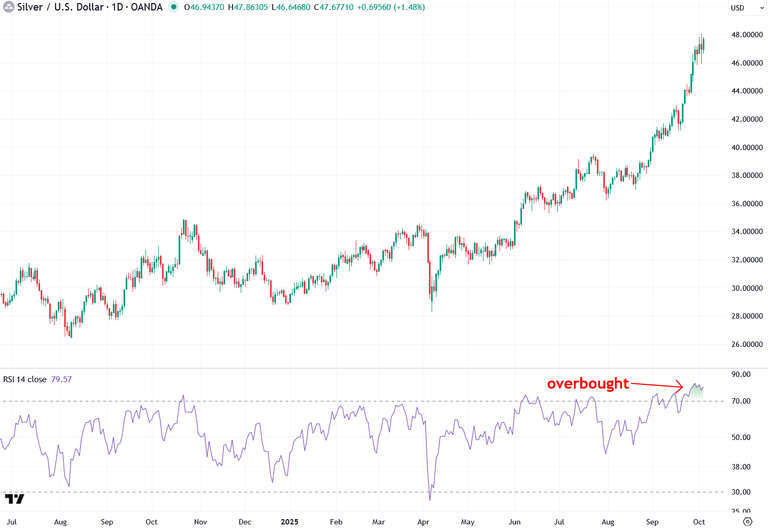
Now I want to get to the part of this report where I explain why the current bull market in silver is very different from the ones that failed in 1980 and 2011. The first point I want to make is that while $50 is a key nominal and psychological price ceiling to watch, and I believe silver will break through it decisively, even if it pauses first to work off its overbought condition, it is important to consider how much inflation has occurred over the past several decades. In real terms, the price of silver remains much lower than those previous peaks. That means $50 in 1980 or 2011 is certainly not the same as $50 in 2025, as anyone who has recently been to the grocery store can easily understand.
To illustrate that point, I created a chart showing the real, or inflation-adjusted, price of silver over the past six decades. On the chart, I highlighted what the $50 silver peaks in 1980 and 2011 would be worth in 2025 dollars. It turns out that in 1980, silver reached the equivalent of $199, and in 2011, it reached the equivalent of $72!
Now compare that to today, with silver trading around $47, which is much lower than either of those past peaks. For that reason alone, not even including the additional points I will explain next, I believe the current silver bull market is sustainable, has much more room to run, and should be able to finally smash through the $50 ceiling that has held it back for so long.
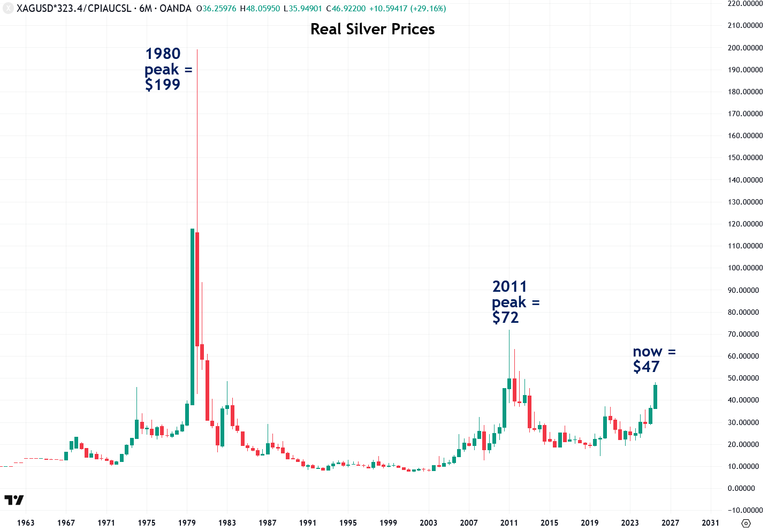
To further reinforce my point above, I also want to show you the ratio of silver to the U.S. M2 money supply, indexed to 100. This may be an even more accurate measure of inflation than the Consumer Price Index (CPI) used to create the previous chart. After all, the root cause of inflation is growth in the money supply itself. As Milton Friedman, the Nobel Prize–winning economist, famously said, “Inflation is always and everywhere a monetary phenomenon.”
https://thebubblebubble.substack.com/p/is-silver-about-to-crash-like-in

